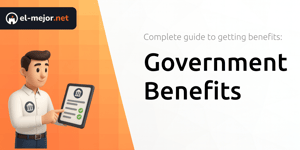Debt can feel like a heavy burden that robs you of peace and hope. Yet, with the right approach and tools, it transforms into an opportunity to reclaim your financial freedom. Negotiating debt is not about confrontation—it’s about collaboration, dignity, and crafting a path forward.
Understanding the Power of Debt Settlement
Debt settlement is a process where you negotiate with your creditor to pay less than the full amount owed. By approaching lenders strategically, you can reduce the total balance, avoid lengthy court battles, and often save thousands of dollars in interest and fees.
Completion rates for debt settlement programs range from 35% to 60%, with an average of 45% to 50%. These figures exceed both Chapter 13 bankruptcy completion rates (33%) and credit counseling program completion rates (21%).
By focusing on paying less than the full, you open doors to financial recovery and enjoy higher success compared to alternatives.
Preparing for Successful Negotiations
Before reaching out to creditors, invest time in thorough preparation. Solid groundwork signals to lenders that you’re serious, organized, and realistic about repayment.
- Organize your debts by priority considering interest rates, balances, and potential legal risks.
- Document your current income, essential expenses, and the circumstances that led to your financial challenges.
- Research your creditor’s settlement policies and track record to anticipate their negotiation style.
- Know your timeline and the point at which creditors typically consider settlements (often when a debt is 90 days past due).
A financial assessment builds negotiating strength by helping you craft a credible, feasible offer that lenders can accept.
Effective Strategies to Strengthen Your Position
One of the most powerful approaches is top-down negotiation. Always begin discussions by asking for full debt forgiveness in one conversation, then gradually lower your request. This gives you room to navigate toward a realistic middle ground.
When making settlement offers that resonate, industry experts recommend starting negotiations at 30% to 50% of the total outstanding balance. Be prepared to explain how you arrived at your figure and why it represents the maximum you can afford.
- Offer a one-time payment: propose a lump sum to close the account quickly and cleanly.
- Propose monthly installments strategically: request a schedule with higher monthly payments and a shorter payoff period.
- Make a significant initial down payment: reduce the principal immediately and build goodwill with your creditor.
This dual approach of flexible payment proposals and clarity can transform a difficult conversation into a constructive agreement for both parties.
Beyond the Principal: Reducing Rates and Reporting
Once you’ve addressed the principal balance, explore additional concessions that ease your burden. Interest rate reduction is often overlooked. If you can reduce your interest rate, more of your monthly payment goes toward paying down the principal instead of covering accruing interest.
Next, negotiate how the creditor reports your account to credit bureaus. Aim to have the debt reported as “Paid in Full” rather than “Paid Settled.” This subtle difference can improve your credit profile over time.
For borrowers facing temporary hardships—illness, job loss, or unexpected emergencies—ask about forbearance options. Request temporary relief during hardship periods to pause or reduce payments without penalty.
Key Considerations and Safeguards
Every settlement carries potential tax implications. Understand that cancelled debt may be taxable income unless you qualify for exclusions. Consult a tax professional to structure your agreement favorably.
Always secure a written agreement for every negotiated term. A secure written agreement for all terms protects you from sudden changes and keeps creditors accountable.
Be mindful of legal actions such as wage garnishment or bank levies. Negotiating before any lawsuit often saves you time, court costs, and additional interest, making settlement far more attractive.
Moving Forward: Empowerment Through Action
Negotiating debt is as much an emotional journey as it is a financial one. Remember that you have the right to negotiate and that taking these steps can restore your sense of control and hope. Approach each conversation with confidence, patience, and transparency.
As you implement these strategies, celebrate small victories: a reduced balance, a favorable payment plan, or a successful interest rate cut. Each milestone brings you closer to true financial freedom.
References
- https://www.investopedia.com/articles/pf/09/debt-settlement.asp
- https://www.consumerfinance.gov/ask-cfpb/how-do-i-negotiate-a-settlement-with-a-debt-collector-en-1447/
- https://www.pdcflow.com/resources/guides/guide-to-payment-and-negotiation-strategies-for-unpaid-accounts/
- https://www.activatedscale.com/blog/debt-settlement-negotiation-strategies
- https://www.texasbar.com/AM/Template.cfm?Section=Free_Legal_Information2&Template=%2FCM%2FContentDisplay.cfm&ContentID=52777
- https://www.equifax.com/personal/education/loans/articles/-/learn/negotiate-debt-with-lenders/










